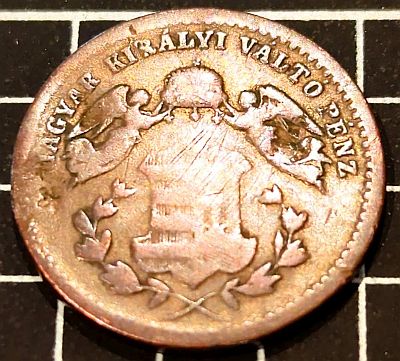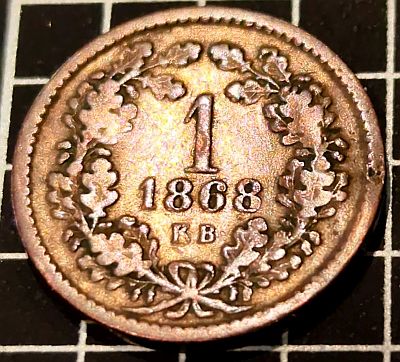On Hungary and the crown with the bent cross.
Hungary
(Location of Hungary (dark green) – in Europe (green & dark grey) – in the European Union (green) – from Wikipedia)
Hungary is a landlocked country in central Europe with a population of 9.5 million. Hungary is surrounded by Slovakia, Ukraine, Romania, Serbia, Croatia, Slovenia and Austria.
Hungarian people from the Urals arrived in the Carpathian Basin in 895-896, then conquered the territory and settled down. One hundred years later our first king, Stephen I, founded the Hungarian state and integrated the country into the European Christian nations. Matthias Corvinus the Righteous, regarded as the greatest Hungarian king ever, made the country one of the most important in Central Europe.
In 1526, the Ottomans conquered and divided Hungary into the Habsburgs in the western and northern parts; Turks in the central area; and the Principality of Transylvania in the south-east as the stronghold of Hungarian culture and independence.
Following other rebellions in the period of the Spring of Nations in Europe, the Hungarians revolted against the Austrian emperor. The revolution was suppressed by the Habsburgs with the help of the Russian Czar. In 1867 a compromise with the Habsburgs was reached, establishing the Austro-Hungarian Empire.
The Habsburg’s were one of the most important dynasties in history. At various times from the 15th to the 20th centuries they controlled at least parts of Austria, Burgundy, Bohemia, Germany, the Holy Roman Empire, Hungary, Luxembourg, the Netherlands and Spain.
Currency
The Austro-Hungarian Gulden was the common currency between their lands from 1754 to 1892. The Gulden was divided into 60 kreuzers.
The Kreuzer was known as the krajczár in Hungary, krajcar in Croatia and Poland, and krejcar in Czechoslovakia.
The Gulden was also known as the florin, forinta or zlatý in Croatia, the florin in Germany, the Forint in Hungary, or zloty or złoty reński in Poland.
Austrian coins used Florin after 1867, derived from the city of Florence, Italy, where the first florins were minted from 1252-1533.
In 1867 the currency was decimalised, with 1 Gulden (Austria) or Floren (Hungary) being worth 100 Kreuzers.
Obverse

Although the denomination was used between at least Austria and Hungary, coins issued in the two countries were visually different. The Austrian version of this coin contains a two-headed eagle.
The obverse of this Hungarian coin contains “Angels holding the crown over the arms of the Kingdom”. The text reads “MAGYAR KIRÁLYI VÁLTÓ PÉNZ”, which roughly translates as “Royal Hungarian Exchange. As the high points in the design, the coat-of-arms of Hungary, crown and angels are all somewhat worn on my example.
The crown is the “The Hungarian Holy Crown” or “Crown of Saint Stephen”. The Hungarian royal crown is the most important piece of the Hungarian royal insignia. Around 1100, King Saint Stephen, founder of Hungary, received this crown for his coronation from Pope Silvester II. The crown is composed of two parts: the diadem with 9 pendants and frontispieces (the so-called “Corona Graeca”) covered by an upper band (the so-called “Corona Latina”), with a crooked cross on top. The diadem has the shape of a Byzantine empress’ crown, with semicircle- and triangular-shaped enamel frontispieces. The primary decorations of the diadem are a series of Byzantine cloisonné enamel pictures, alternating with gemstones. The “Corona Graeca” was a diplomatic gift of the court of Constantinople to Géza I, probably sent to Hungary with his Byzantine aristocrat fiancée. The whole “Corona Latina” (pictures and cross-band) was likely made on the request of a Hungarian king, Coloman (r. 1095-1116) or maybe Béla III (r. 1172-1196).

(The Holy Crown of Hungary, image from CoinCommunity.com)
At some point, likely in the 17th or 18th centuries, the crown was damaged, and the cross became bent at an angle. There is no definitive evidence of how or when this happened. The crown now is iconic for this bent cross, which has appeared on coins and the coat of arms since at least 1867. The cross is straight on coins from the 1781 Thaler (also with angels holding the crown) to at least a 6 Kreuzer issued in 1849 (there were no angels holding it then – maybe they should have left the crown in the hands of the angels?).
Reverse

The reverse features the value and date within a wreath. Underneath the date is the mintmark. Some 1868 coins have GYF for Alba Iulia, Romania. These are rare. Most, such as mine, have KB for Kremnica, Slovakia.


Leave a Reply